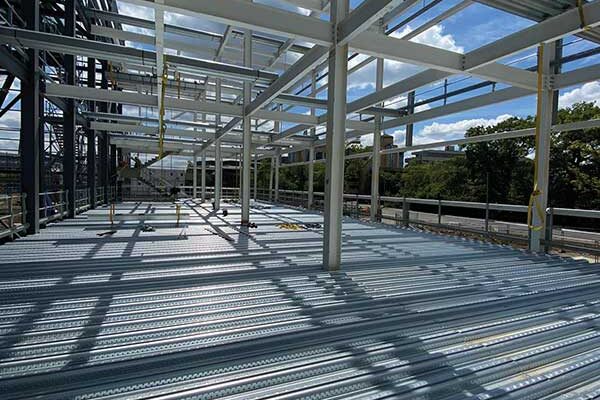Projects and Features
Engineered fire safety
 The British Constructional Steelwork Association and Tata Steel will bring together some of the UK’s leading experts on fire safety engineering in two seminars.
The British Constructional Steelwork Association and Tata Steel will bring together some of the UK’s leading experts on fire safety engineering in two seminars.
To be held in June the series of two fire safety engineering seminars is aimed at engineers and designers. The seminars are half day morning sessions with a great line up of leading specialists including John Dowling, the BCSA’s own fire specialist; Wilf Butcher, Director of the Association for Specialist Fire Protection; Professor Roger Plank, former President of the Institution of Structural Engineers; Neal Butterworth of Arup Fire; Dr. Florian Block from Buro Happold and Dr. Mark O’Connor from WSP.
The confirmed dates are:
Tuesday 11 June at The Beardmore Hotel, Glasgow
Thursday 20 June at the Novotel Bristol Centre, Bristol
Issues to be discussed will include fire and provision of precautions to prevent fire spread and collapse in buildings. Some years ago, a published study found that the provision of fire precautions can account for up to 8% or 9% of the total construction costs in some buildings such as shopping centres and hospitals. Even in medium sized office blocks that figure was typically 4% or 5%. It is important therefore that the solutions adopted for fire precautions in buildings are the best and most cost-effective available.
In England and Wales, most fire precautions in buildings are designed according to a Government published document, Approved Document B. North of the border, the Scottish Government publishes Technical Handbook 2 for the same purpose. However, both documents state that it is not necessary to use them if alternatives can be found which will demonstrate that the buildings in question will still meet the requirements of the Building Regulations as far as fire precautions are concerned. Indeed, both documents cite that increasing innovation in design, construction and usage of modern buildings has created a situation where it is sometimes difficult to satisfy the functional requirements of the Building Regulations by the use only of the provisions given in the Approved Document and Technical Handbook.
This has opened the door for engineered, or performance based, approaches to the design of fire precautions in buildings and this country can now lay claim to many of the world’s leading consultancies in this field. As a consequence, the majority of tall and complex buildings now benefit from an engineered approach to fire rather than relying on the prescriptive provisions of Approved Document B or similar. This has proved beneficial to the construction industry as a whole, but particularly to the steel construction sector, which has carried out most of the research and whose structures consequently offer the greatest potential for improved solutions using fire engineering.
Fire safety engineering can be seen as an integrated package of measures designed to achieve the maximum benefit from the available methods of preventing, controlling or limiting the consequences of fire. The Institution of Structural Engineers says of structural fire engineering: “By adopting a performance based approach to structural fire engineering… more economic designs can be achieved and more innovative and complex buildings can be constructed.”
To register to attend one of the free seminars visit www.steelconstruction.info/Fire_Seminars_2013












